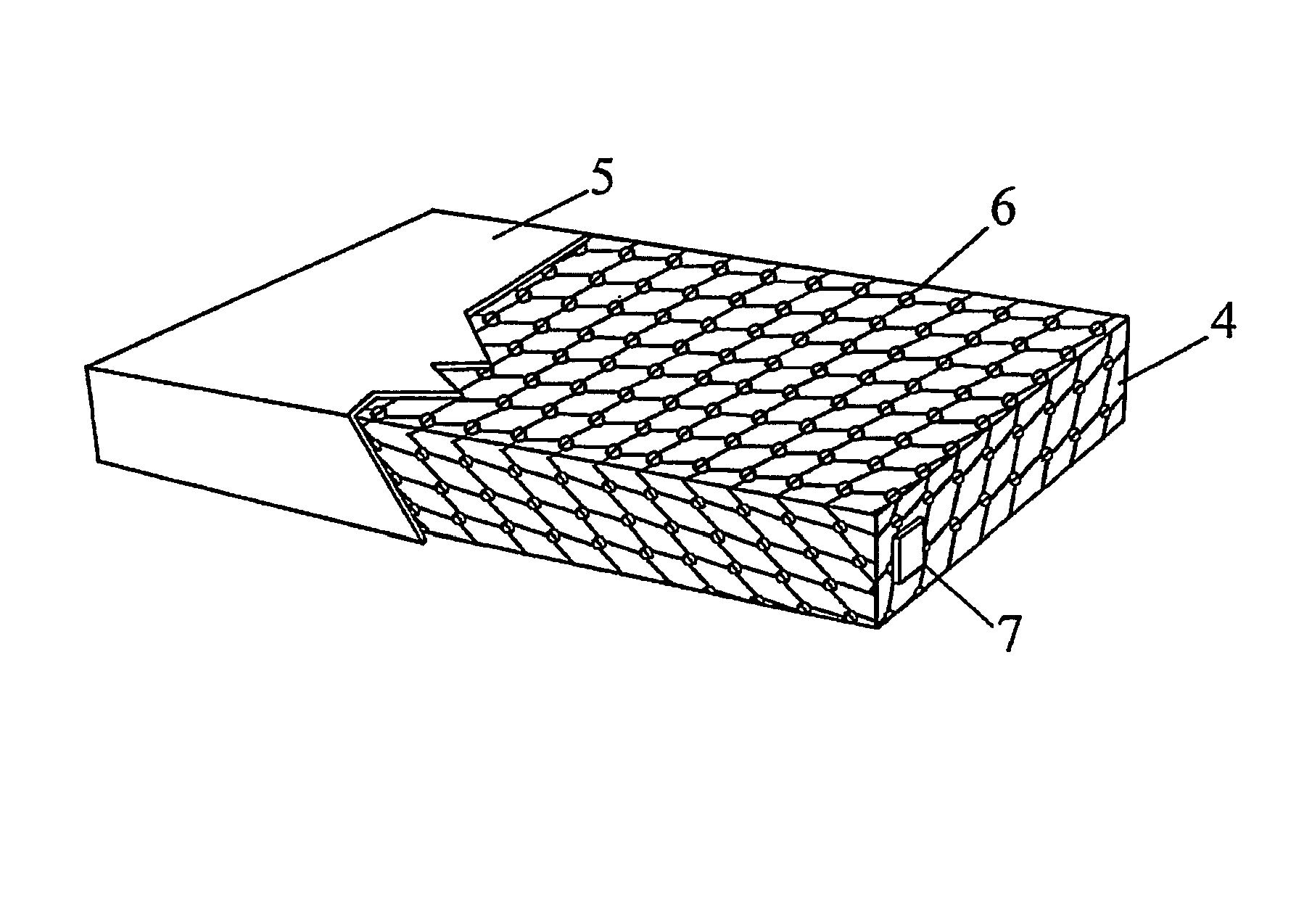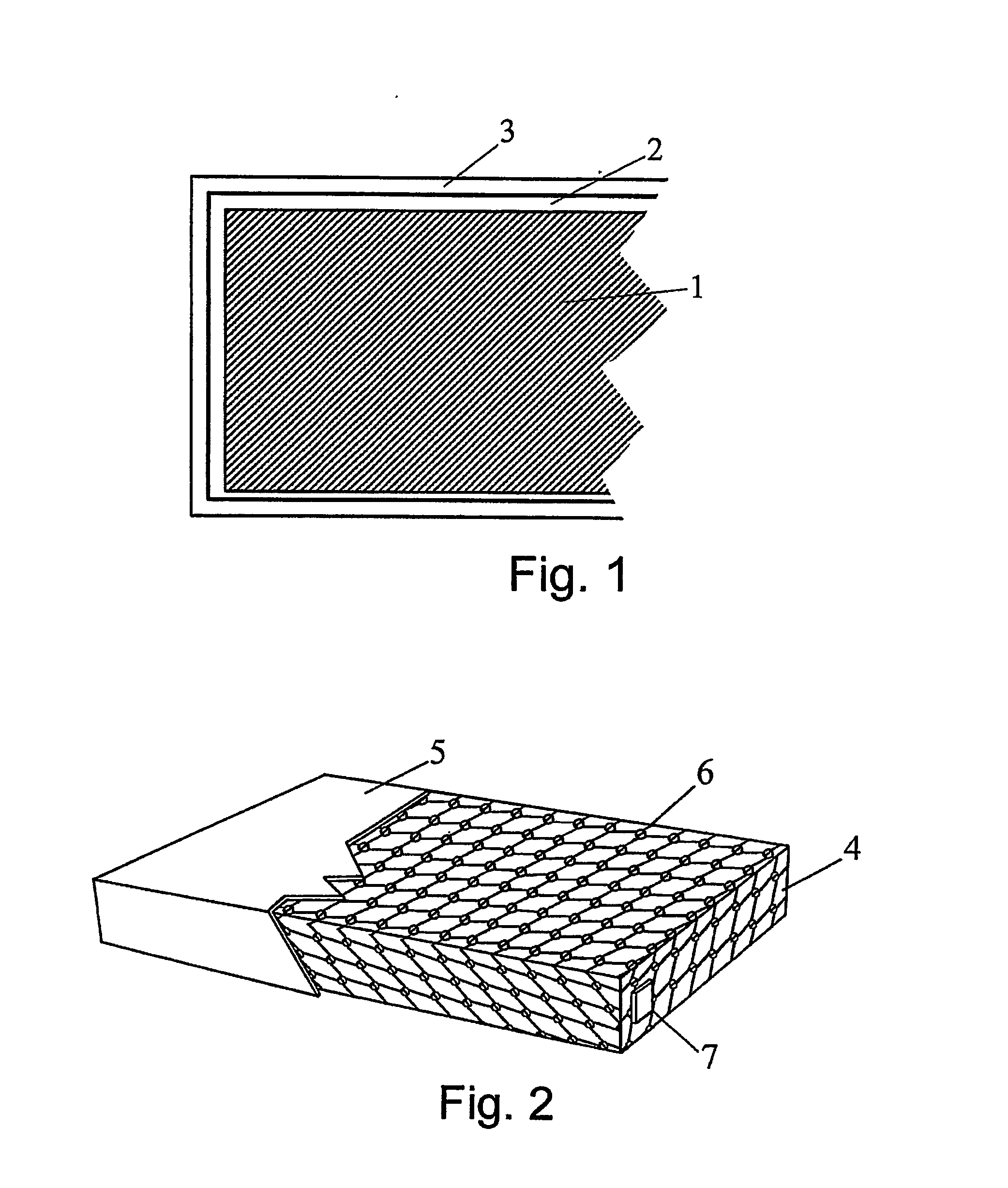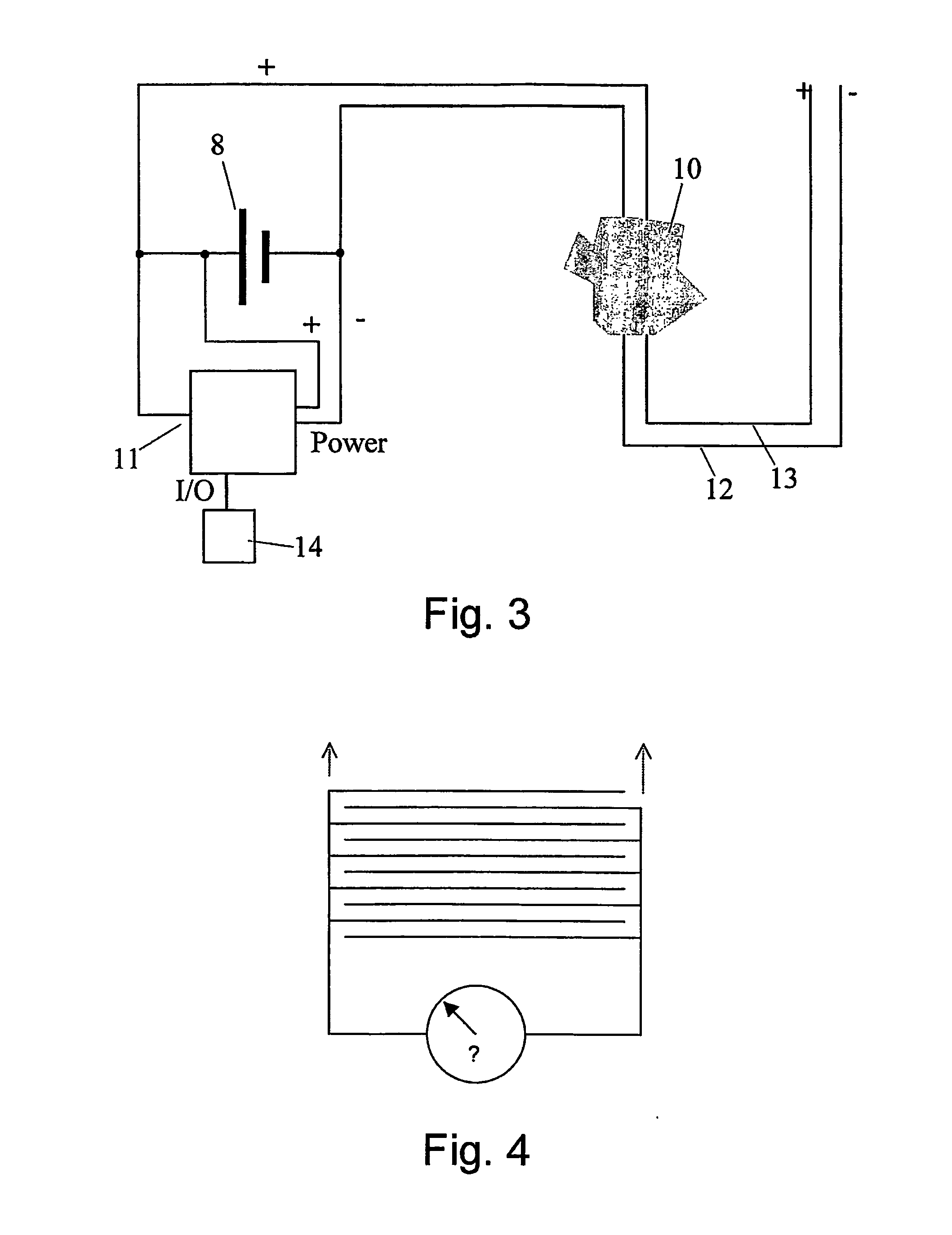Mattress Protection
a mattress and protector technology, applied in the field of mattress protectors, can solve the problems of increasing pressure on the mattress, potential health and safety risk to the staff undertaking the audit, and non-patient contact activities such as mattress management being increasingly devolved to non-nursing staff, so as to reduce the perturbation of the stretch properties of the mattress
- Summary
- Abstract
- Description
- Claims
- Application Information
AI Technical Summary
Benefits of technology
Problems solved by technology
Method used
Image
Examples
experimental examples
[0041] Sample devices were constructed as follows:
[0042] One rectangular piece of conductive-striped fabric was cut from bulk, 250 mm×260 mm, with longer dimension weft-ways (across width).
[0043] Two rectangular pieces of fusible interfacing were cut from bulk, 250 mm×30 mm, one fused to each shorter edge of the conductive-striped fabric.
[0044] All four edges of the assembly were over-locked. Rectangular holes were cut out of alternate weft bars one each side (with the sides offset by one bar, creating the circuit as shown above) approximately 14 mm from edge and approximately 13 mm wide. Two lengths of 17 mm wide tape with tinned-copper wire floats were cut 280 mm long. One is stitched in place on each side such that the wire floats contact the weft bars. An overhang of 30 mm is placed at one end to be used for attaching the multimeter.
[0045] The specimens were assessed for their response to distilled water and to a 4% saline solution. The former should indicate the likely beha...
PUM
 Login to View More
Login to View More Abstract
Description
Claims
Application Information
 Login to View More
Login to View More - R&D
- Intellectual Property
- Life Sciences
- Materials
- Tech Scout
- Unparalleled Data Quality
- Higher Quality Content
- 60% Fewer Hallucinations
Browse by: Latest US Patents, China's latest patents, Technical Efficacy Thesaurus, Application Domain, Technology Topic, Popular Technical Reports.
© 2025 PatSnap. All rights reserved.Legal|Privacy policy|Modern Slavery Act Transparency Statement|Sitemap|About US| Contact US: help@patsnap.com



